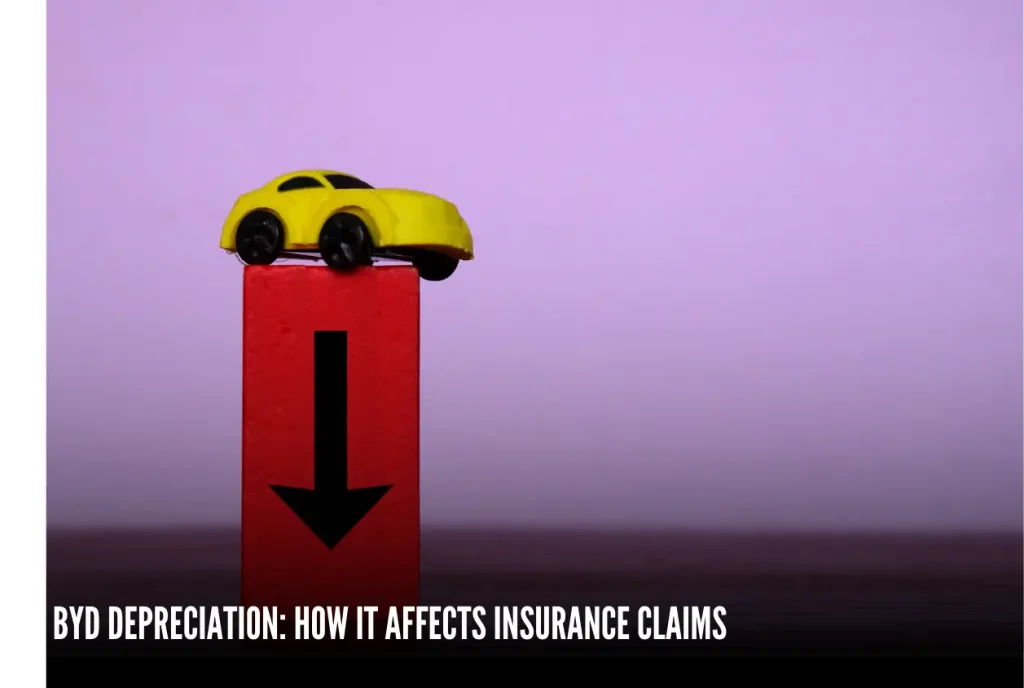BYD has revolutionized the electric vehicle (EV) market with affordable, innovative models, making EV ownership more accessible worldwide. But owning a BYD—or any EV—comes with its unique challenges, one of which is depreciation. The value of aa car naturally drops over time, but depreciation in EVs like BYD can have a direct impact on insurance claims, diminished value appraisals, and even total loss payouts.
Understanding how depreciation interacts with these factors is crucial for owners looking to protect their investment. In this article, we’ll break down the relationship between BYD depreciation and its effect on vehicle valuations, insurance, and claims.
DOWNLOAD: “BYD Depreciation: How It Impacts Insurance Claims and Appraisals”.PDF
How BYD Depreciation Impacts Fair Market Value (FMV)
Fair Market Value (FMV) is the estimated price your vehicle would fetch in the open market before an accident or loss. For BYD vehicles, depreciation is a major driver of FMV. Here’s how it works:
- Rapid Technology Changes: BYD continuously updates its models with better range, improved batteries, and advanced features. While this keeps BYD ahead in the market, older models depreciate faster as newer options overshadow them.
- Depreciation and FMV in Insurance Claims: Insurers use FMV to determine payouts in cases of total loss. If your BYD has depreciated significantly, you could face a payout much lower than expected. For instance, if your car is only a year old but has lost 20-30% of its value, your insurance payout might not cover what you originally paid.
- Maintaining FMV: Keeping detailed maintenance records and ensuring your battery is in optimal condition can slow depreciation and maintain a higher FMV.
Depreciation’s Role in Diminished Value (DV) Claims
When a BYD vehicle is involved in an accident, its market value drops—not just due to physical damage but because buyers are wary of vehicles with an accident history. This is called diminished value (DV), and depreciation amplifies the effect.
- DV in BYD EVs: Because EV buyers often prioritize advanced features and efficiency, an accident can be more damaging to a BYD’s resale value than to a traditional gas car. Depreciation compounds this effect, as a lower baseline value makes the post-accident drop even more significant.
- Insurance and DV Claims: When filing a diminished value claim, insurers often try to minimize payouts by citing the already depreciated value of the vehicle. Having an independent appraiser evaluate your car can ensure you receive fair compensation for the DV caused by an accident
BYD Depreciation and Total Loss Claims
If your BYD is declared a total loss after an accident, depreciation will play a huge role in determining the actual cash value (ACV)—the amount your insurer will pay out.
- ACV and BYD Depreciation: Since depreciation directly affects the ACV, a newer BYD model with high initial depreciation may leave you with a gap between the payout and what you still owe on the vehicle. This is particularly important for owners with loans or leases.
- Protecting Against Gaps: If your BYD is heavily financed or leased, consider adding GAP insurance to cover the difference between the payout and the loan balance in case of total loss. This is especially critical for BYD owners due to the faster depreciation of EVs compared to traditional cars.
- Battery Damage Considerations: In total loss scenarios, the high replacement cost of BYD’s Blade Battery often pushes repair costs above the vehicle’s value, increasing the likelihood of the car being declared a total loss.

Tips for Minimizing BYD Depreciation
While depreciation is inevitable, there are steps BYD owners can take to minimize its effects:
- Regular Maintenance: Proper maintenance of both the vehicle and its battery can slow depreciation. Keeping service records can also increase your car’s perceived value during appraisals.
- Resale Timing: Avoid selling your BYD during periods of rapid technological upgrades, such as the release of newer models with significantly better range or features.
- Leverage Appraisals: Independent appraisals are key for establishing a fair FMV or DV after an accident. If you feel your insurer has undervalued your BYD, an appraiser can provide evidence to support your claim.
Why BYD Depreciation Matters to Buyers and Sellers
Depreciation isn’t just a concern for current BYD owners—it’s also crucial for buyers and sellers in the EV market.
- For Buyers: Depreciation creates opportunities to purchase nearly new BYD models at a fraction of their original price. However, always check the battery’s condition to avoid unexpected expenses.
- For Sellers: Understanding depreciation helps set realistic expectations for resale value. Highlighting the car’s features, such as BYD’s advanced battery technology, can help justify a higher asking price.
Conclusion
BYD vehicles are at the forefront of the EV revolution, but rapid innovation and unique market dynamics mean depreciation is a critical factor to understand. From insurance payouts to diminished value claims, depreciation directly impacts the financial outcomes for BYD owners. By staying informed and proactive—whether through regular maintenance, independent appraisals, or adding GAP insurance—you can better navigate the challenges of owning or selling a BYD.
So, are you ready to protect your BYD’s value and make smarter decisions in today’s ever-changing EV market?





